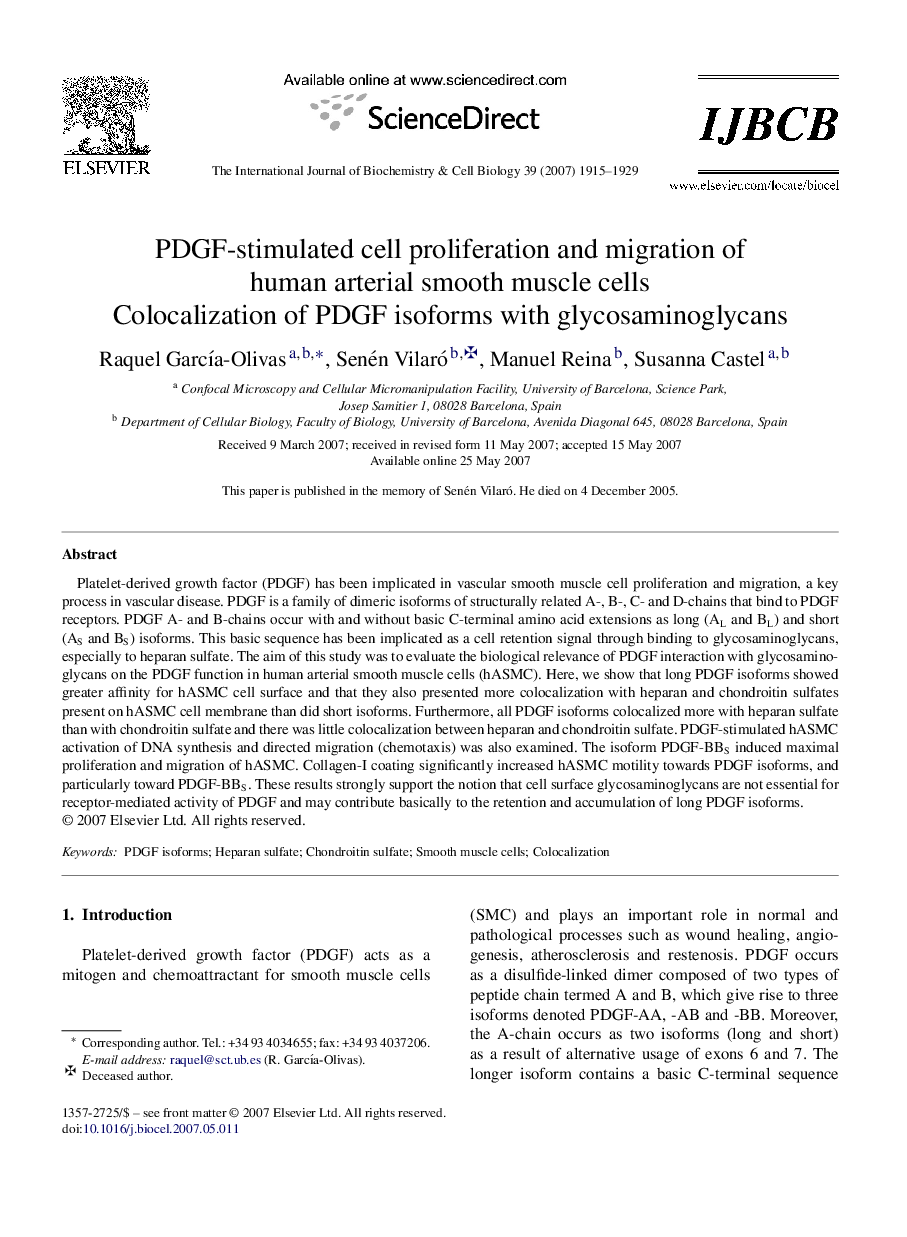| Article ID | Journal | Published Year | Pages | File Type |
|---|---|---|---|---|
| 1985410 | The International Journal of Biochemistry & Cell Biology | 2007 | 15 Pages |
Platelet-derived growth factor (PDGF) has been implicated in vascular smooth muscle cell proliferation and migration, a key process in vascular disease. PDGF is a family of dimeric isoforms of structurally related A-, B-, C- and D-chains that bind to PDGF receptors. PDGF A- and B-chains occur with and without basic C-terminal amino acid extensions as long (AL and BL) and short (AS and BS) isoforms. This basic sequence has been implicated as a cell retention signal through binding to glycosaminoglycans, especially to heparan sulfate. The aim of this study was to evaluate the biological relevance of PDGF interaction with glycosaminoglycans on the PDGF function in human arterial smooth muscle cells (hASMC). Here, we show that long PDGF isoforms showed greater affinity for hASMC cell surface and that they also presented more colocalization with heparan and chondroitin sulfates present on hASMC cell membrane than did short isoforms. Furthermore, all PDGF isoforms colocalized more with heparan sulfate than with chondroitin sulfate and there was little colocalization between heparan and chondroitin sulfate. PDGF-stimulated hASMC activation of DNA synthesis and directed migration (chemotaxis) was also examined. The isoform PDGF-BBS induced maximal proliferation and migration of hASMC. Collagen-I coating significantly increased hASMC motility towards PDGF isoforms, and particularly toward PDGF-BBS. These results strongly support the notion that cell surface glycosaminoglycans are not essential for receptor-mediated activity of PDGF and may contribute basically to the retention and accumulation of long PDGF isoforms.
